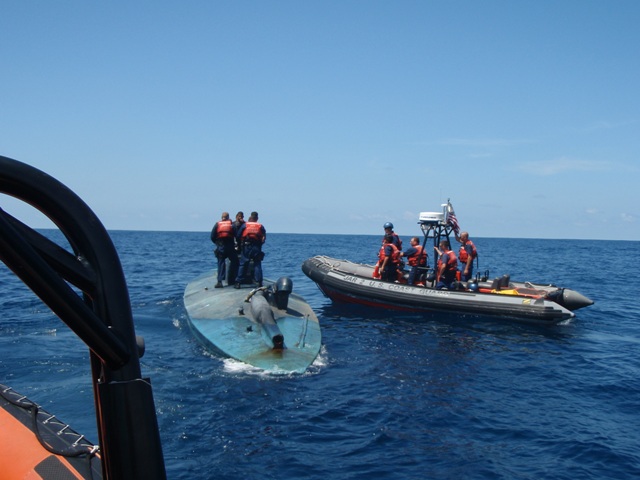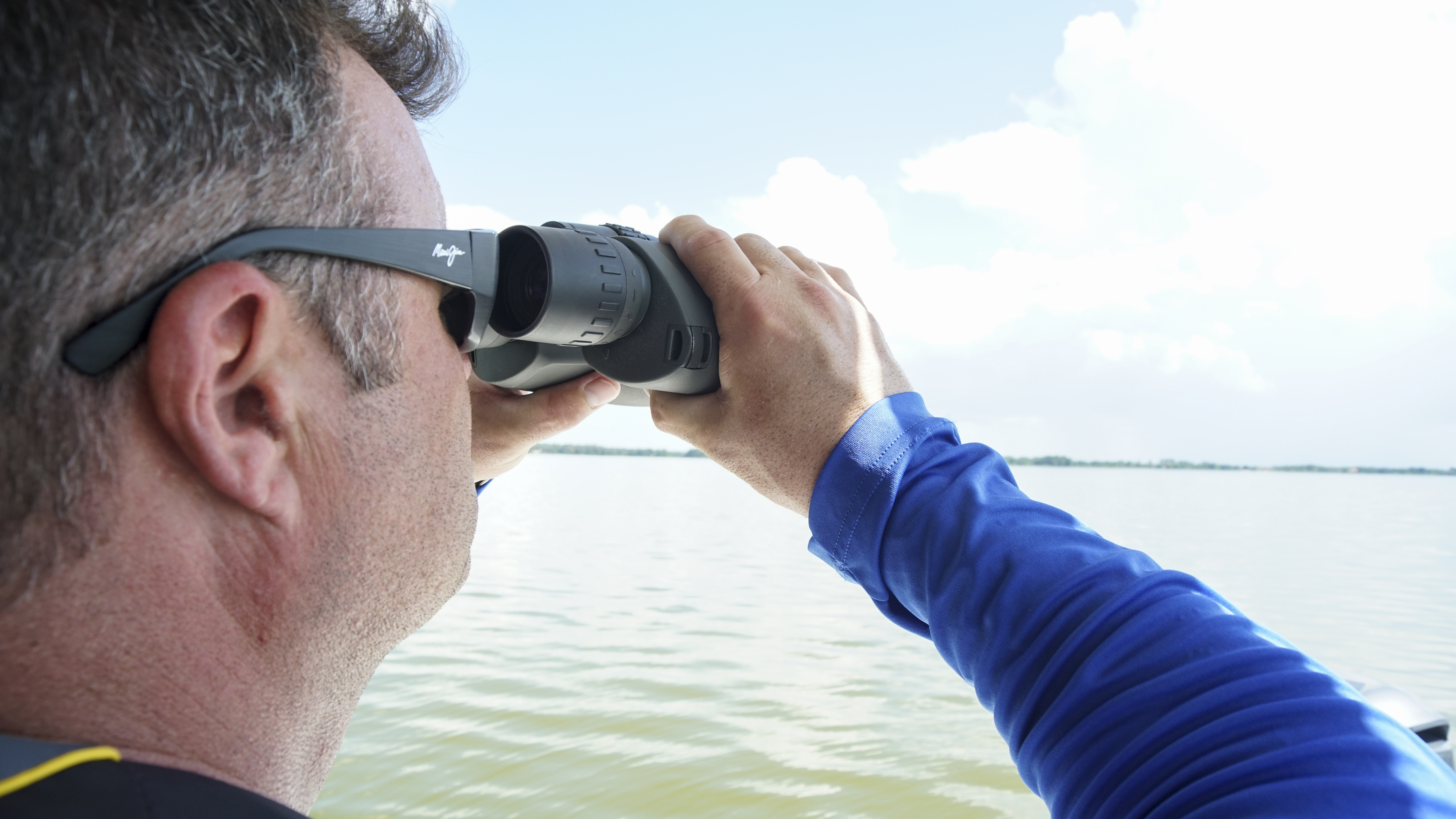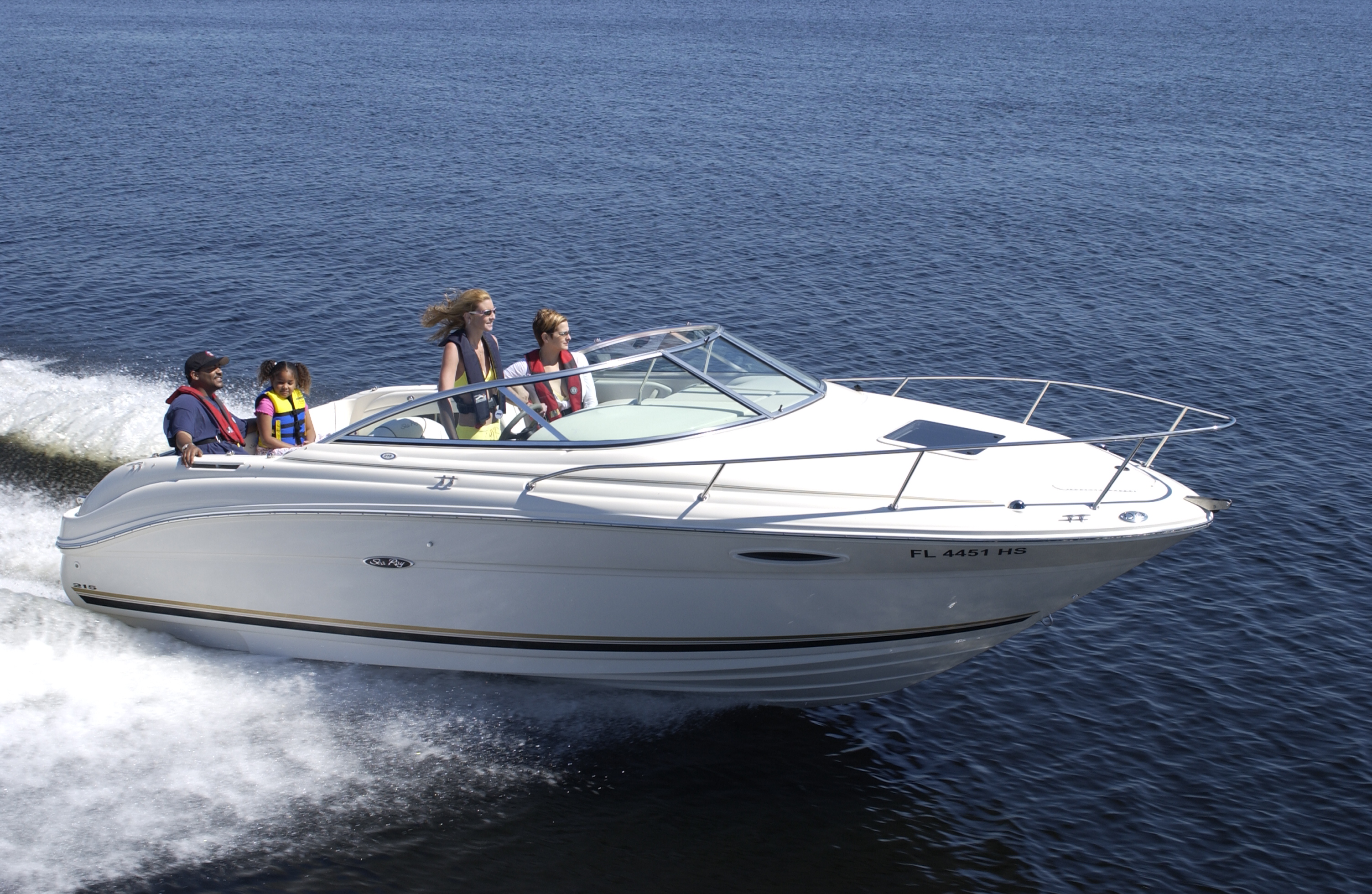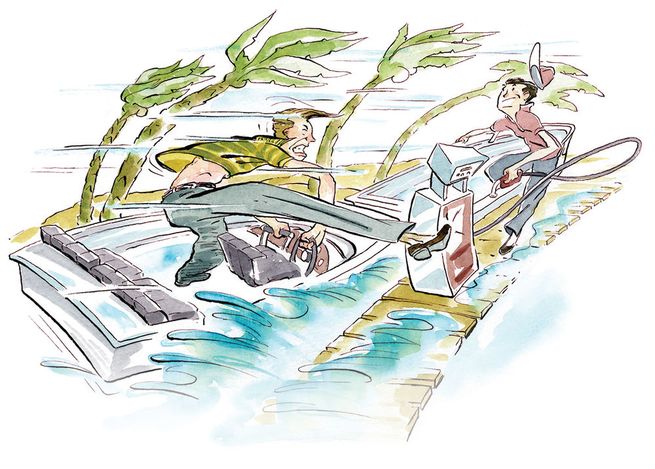Capsized or swamped, stay with the boat!

It can seemingly happen in a heartbeat: a following wave stuffs and rolls your boat, and you’re in the water. Or, the body of water is in your boat — a wave or wake over bow, transom or gunwales; a hull split; a through-hull failed. Maybe (sigh!) someone forgot to install the plug. The first rule’s the same whether you’re in the drink or the sea’s in your boat: Stay with the boat! Start thinking of your boat as the first “lifeboat,” a key component in your rescue story. Prepare it, and prepare yourself, for the unlikely crisis.
When you are in trouble, and someone is searching for you, the bigger “you” are, the better. “If someone’s looking for you from a C-130 or a helicopter,” says Christopher Todd, public affairs officer for the U.S. Coast Guard Auxiliary, or indeed, from another boat or from just about anywhere, “it’s like looking for a basketball floating in the water.” You’ve undoubtedly lost at least one hat overboard. Remember how quickly it seemed to disappear, even though you knew it was still floating? Wouldn’t it have been far easier to find if it had been clipped to a cooler or other large floating object? You’re the hat. The boat — keel-up or in just about any posture but sunken — is the cooler, a much more visible target. Stay with it until a first responder or good Samaritan can transfer you to safety. Meanwhile, grab what survival gear you can without leaving the boat to do it: flares, distress signals, additional (because you’re already wearing yours, right?) flotation devices. Get your ditch bag; hopefully, there’s a registered emergency position-indicating radio beacon (EPIRB) in there with the marine radio and other gear. Send its lifesaving signal. Other loose equipment? Tether it to the boat to make it (and you with it) more visible, or release some or all into the water to create a debris field to help catch rescuers’ eyes.
Staying with the boat can also make survival a successful group effort! Share warmth, faith and confidence. Climbing out of the water, and huddling with others, slows heat loss and the impaired judgment it can bring. “If you believe you’re going to be rescued, and don’t panic” — and stay with the boat, Todd says, “that can be a huge factor.”
* * * * *
The U.S. Coast Guard is asking all boat owners and operators to help reduce fatalities, injuries, property damage, and associated healthcare costs related to recreational boating accidents by taking personal responsibility for their own safety and the safety of their passengers. Essential steps include: wearing a life jacket at all times and requiring passengers to do the same; never boating under the influence (BUI); successfully completing a boating safety course; and getting a Vessel Safety Check (VSC) annually from local U.S. Coast Guard Auxiliary, United States Power Squadrons(r), or your state boating agency’s Vessel Examiners. The U.S. Coast Guard reminds all boaters to “Boat Responsibly!” For more tips on boating safety, visit www.uscgboating.org.




